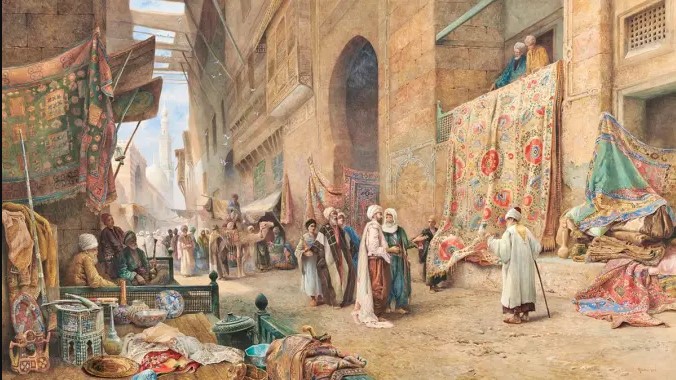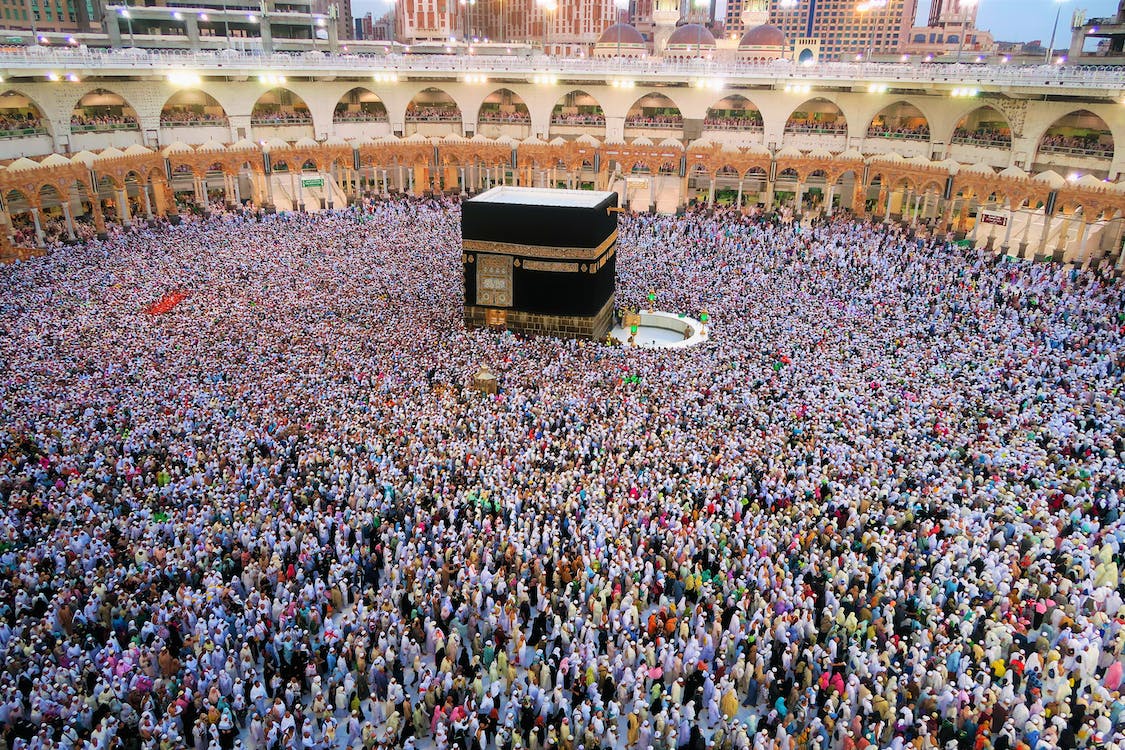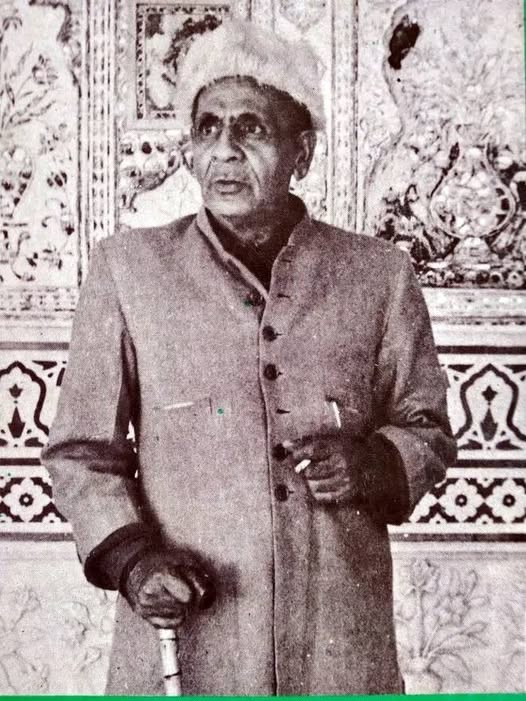Hussain Randathani
India fostered cordial relationship with middle – eastern countries even from prehistoric days through maritime trade relations. It is said that during Solomon’s reign (c.970-931 BC), the king imported Indian gold, silver, ivory, monkeys, peacock and the likes from Malabar, in South India. This enabled exchange of cultures and it was strengthened in later times. After the Islamic revolution led by Prophet Muhammad in seventh century, the wave of cultural interaction increased from Arab lands to the east. The Arabs, inspiring from their prophet took interest in acquiring knowledge, and they moved to distant lands in order to spread the message of Islam and collect information and knowledge from therein. After Abbasids (750-1258) established the Arab government at Baghdad, Muslims had an unprecedented surge forward in science and literature. During this period attempts were made to synthesize Islamic culture through Indo – Greek – Persian literary and scientific heritage. In fact, regional and linguistic issues never became a hindrance to Muslims for acquiring knowledge. Muslims believed that Prophets had appeared for all societies; hence in all the places where remnants of truth existed, there should be the advent of prophets earlier. This thought gave depth and magnitude to Muslim people’s quest for knowledge. They reasonably presumed that ancient India also should have received messages of prophets, because of the existence of monotheism, scientific and spiritual knowledge and heritage existed there.
Astronomy
Initially it was India’s astronomy which attracted the Arabs. Brahma Siddanta, a book on Indian astronomical science believed to be written in 6th century BC was translated in to Arabic by Ibn Ibrahim al Fasari during the period of Mansur (753-775), the second Abbasid Caliph. Arabian interest in Indian sciences expanded after the Sanskrit works Arya Bhattiya (Al Jabal), Khanda Katakkya (Arkkant) and such other works were translated in to Arabic. Indian astronomical studies helped the Arabs to find out the direction of Ka’ba and to calculate Hijra year. Al Fasari, Al Khwarismi, Habas al Marvasi and others wrote books based on Sind Hind, the Arabic translation of Brahma Siddanata. Kalpa Siddanta written in Sanskrit was a topic of discussion among Arab scientists.
In the field of mathematical science also Arabs are indebted to India. It is believed that the word Handasa (Geometry/ Engineering) had been originated from Hindi. The numerical system called Hindi by Arabs and Arabic by Europeans has been a gift of India. Indian numerals were found used in the book of an eleventh century Muslim mathematical scientist Ahmad al Nasavi (Al Mughnia fil Hisab al Hindi) first. Moreover, it was from India that Arabs imbibed the use of zero (Safar). Many presumptions about Geology held by Indians were prevailing in Arabia too. The earth is revolving around its axis; the ratio of water and land on the surface of the earth are equal; land is circumscribed by water; land is jutting out of water like a tower; the mountain Meru is situated at the highest place of the land; north pole is the human inhabited place; human inhabited area are divided in to nine sections; these were the Indian geological assumptions existed in Arabia at that time.
Medical science
Arabs were very much influenced by Indian medical science. Al Haris, a contemporary of Prophet Muhammad had visited India and Persia to study Indian medicine. Abbasid Caliphs and their ministers called Barmakids encouraged Indian medical science very well. When Caliph Harun al Rashid (786 – 809) became severely ill and the court physicians failed to cure it, a physician named Manka (Manikya) was brought from India and he marvelously cured the illness. The Caliph made him the chief of the renowned Barmaki hospital at Baghdad. Manka translated books in Sanskrit on medicine into Arabic and Persian. Apart from Manka, Ibn Dahan , Salih and other Indians also rendered their service in Baghdad at that time. Salih also, like Manka, became popular after curing the illness of Ibrahim, brother in law of the Caliph. The court physician Jibril Baktishu, a Jew, declared that Ibrahim had already been dead. In fact he was only unconscious due to an attack of epilepsy. After due rituals, the body was placed in the coffin box. Salih who was present there realized that the person was not dead. He gently pricked somewhere on the left hand of the person with a needle. The “dead” person regained consciousness. Salih blew a powder prepared from the herb named Kundus (Veratrum Album) to the nostrils of the patient. After ten minutes the man sneezed and showed movements. (M.Z.Siddique, Studies in Arabic and Persian Medical literature. Calcutta, 1959, page 35-38)
Many Indian medical books were translated into Arabic during Abbasic Calphate. Indian physicians like Kanakyan (Kanka), Sanchal, Chanakya (Soukh), Jadhour and such others became familiar to Arabs. Charaka, Susruth (Susrutha), Asthakar (Ashtanga hridaya), Nidan (Nidana), Sinddasthak (Siddayoga) and others are Arabic translations of Sanskrit books. The book written by a woman named Russa on feminine diseases and the books on treatment for poisoning (Visha Chikitsa) were translated in to Arabic. However, Greek medicine became more influential with Arabs than Indian medicine. Unani is a system of medical science fostered by Arabs imitating Greek medical system. Many Indian methods and medicines also had found a place in the Unani.
Literature
Initially Arabs were not much interested in Indian literary works, because most of the works were connected with gods and goddesses and lacked literary quality when compared with those of Arabs and Persians. In Indian literature Arabs were mainly attracted by the Panchatantra stories which reached the Arabs from its Pahlawi translation. The Pahlawi text was written at the time of Sassanian ruler Anu Shirvan (AD 531-579) by Busurg Mihar and Ibn Muqaffa translated it into Arbaic in the eighth century. The Arabic and Persian name of the book was Kalila wa Dimna which was taken from the names of two foxes (Karataka and Menaka) mentioned in the first chapter of the work. Many Arabian stories including Sinbad’s voyages have connections with Panchatantra.
In the 11th century, Abu Salih bn Shuaib and Abul Hasan Ali Jabali translated some parts of Mahabharata in to Arabic. It was the delightful fables in Mahabharata attracted them. In Arabic works there are information about Hindu – Buddist religions. There are references to Brahmana and Sramana, and a Buddist sect called Samania. Kitab al Bud, Kitab al Balavharva Budasaf, Kitab al Budasaf, and Mufrad are the Arabic works on Buddism in the Medieval period.
Knowledge
Sind had been under the direct rule of Arabs from the beginning of 8th century and it lasted till the end of 9th century. Al Mansura (capital) and Multan grew as cultural centers during this time. Travelers and geographers like Mas’udi, Ibn Houqal, Maqdisi had described vividly on the culture flourished in Sind during Arab rule. Many Arab families settled permanently in Sind from 8th century onwards and had involved in the trade and propagation of Islam. They moved to different places of India from there and reached as far as Assam and Bengal much before the beginning of Muslim rule in India. The Arabs had settled on the coastal regions of India from ancient period.
Until the eleventh century, Arabs had only superficial knowledge about India’s civilization and religious philosophy. Albiruni, a scholar proficient in Greek, Roaman and Iranian sciences visited India in the eleventh century, studied Indian sciences and compiled his History of India (Tarikh al Hind), an encyclopedic work on Indian History, culture and sciences. He translated Sanskrit books into Arabic and spread the Indian knowledge in far off lands. He also translated some Arabic works into Sanskrit. Arabs gathered the knowledge from Albiruni that religious beliefs of Indians were not completely of polytheism and Indian scriptures put forth the idea of monotheism in a clear manner. He translated Sanskrit books like Samkya, Pathanjali, Brahma Siddanta, Brihath Samhita and Laghu Jathakam in to Arabic. He versified the books of Euclid and Ptolemy.
From the eleventh century onwards Islamic establishments and customs began to arrive in India through the rulers. Islamic educational methods started to acquire popularity during the time. In the year 1065-67 Nizamul Mulk, the minister of Alp Arsalan (1063-72), the Saljuq Sultan, established Nizamiyya college in Baghdad with a new curriculum and the Ghaznavi Sultans introduced the system in Indian sub continent by starting colleges in Lahore and Ghazna. The Quwwat al Islam college, started by Sultan Iltutmish in 1236, adopted the same system. Later Sultan Sikandar Lodi,(d.1517) opened education centers at different places and encouraged science education under the supervision of his brothers Sheikh Abdulla and Sheikh Azizulla. Mir Fath-ulla Shirazi (Physics) and Hakim Ali Jeealni (Medicine) were famous scientists belonging to the period of Akbar, the Great.
Muslim scholars and rulers were behind the unprecedented transformation in the field of education during the medieval period. A number of scholars and Sufis migrated to India during this time finding it a safe place from Mongol onslaughts. India was fortunate to offer protection to the Muslim scholars and Sufis, who escaped Baghdad after its fall in 1258. Sultan Giyasuddin Balban, (1226-1287) was keen to accommodate these luminaries to enhance the cultural hegemony of his realm. He appointed them in important posts and honored them with titles.
In the South
As mentioned elsewhere, South India became the centre of early Arab contact in Indian subcontinent. When the global trade monopoly came to the hands of the Arabs, they moved to places where spices and other trade commodities were available. South Indian coast, which provided pepper and other spices, became the paradise of the traders and they settled largely on the coast. While Kannur, Calicut, Kodungallur, Cochin and Kollam excelled in Arab trade on the western coast (Malabar Coast), the eastern coast (Coromandal Coast) was represented by Kayalpattanam, Kilakkarai, Nagapatanam, Adiram patanam and other ports. The islands called Laccadieves, situated in Arabian Sea also became a centre of Arab trade along with Malabar and Arab traders and sufi missionaries spread the way of Islam in all the places where they settled. One Arab, Ubaidullah was responsible for the spread of Islam in the Laccadieves, while Malik Dinar and his followers, belonging to Arabo Perisan race took up the Islamic missionary in Malabar. Zamorin, the Hindu king of Malabar received a number of Muslim sufis and traders to his land of Calicut, and under him the city became a land of multi cultures with a cosmopolitan outlook, different communities staying in a very cordial atmosphere. As per the traditions, Mughira bin Shu’ba , a disciple of Prophet Muhammad, was well received by the zamorin, that he donated a sheet to cover the holy Ka’ba. There are stories of the kings converting to Islam and assisting the promulgamation of the faith on the coast. After seventeenth century a number of Hadrami Sayyid families moved to Malabar, settling at different places of Malabar, engaging in active missionary works. It is because of this Malabar became a land inhabited by Muslims, despite the fact that the region was not ruled by a Muslim ruler, except that, a regional Muslim ruling family, called Arakkal Sultans, administered only in a small area in the Northern Malabar.
Northern India
In northern India religious scholars started arriving during the period of Gahaznavi Sultans. Foremost among them was an exponent of Qur-an, Sheikh Muhammed Ismail (d. 1056). During the time of Sultan Iltutmish (1211-1236) a scholar in prophetic tradition (Muhaddith) Hasan Sagani was the Indian Ambassador to Bhaghdad. An Egyptian scholar Shamsuddin came to India when Alauddin Khalji (1296-1316) was the Sultan. When the scholar knew that the sultan did not perform namaz and never goes to the mosque for congregational prayer, he wrote a long letter to the Sultan regarding this and abruptly left India. Safeehudheen Hindi (d.1315) was an Indian scholar who got much popularity in Yemen and Egypt. The visit to India by the Moroccan traveler Ibn Battuta was a milestone in Indo-Arab relations. Umar bin Ishaq, who served in Egypt as Qazi Quzat (Chief Justice) in 14th century, was an Indian.
In the medieval times, Gujarat was a centre of Arab scholars who settled here in large numbers. Wajeehuddin Muhammad Malik, who was also known as Malik al Muhadditheen and Ibn Damamini (Egypt) were important personalities in the time of Sultan Ahmed Shah, the first. During Bahmini rule, Mahalam, a place near Mumbai, and Surat were centers of discourses of Arab Scholars. Arab scholar Hasan bin Ali Adqam (1636) was a member of Bijapur Sultan’s palace. Sheikh Zainudheen Ma’bari, was honoured in Bijapur palace. He dedicated his book, Tuhfatul Mujahidin to Bijapur Sultan, Ali Adil Shah. Arab scholars and Arabic books flowed to India during the rule of Mughals and Muslim Amirs. A number of Arab books, mostly on practices of Islam and Sufism were compiled during this period. Musallam al Sabuth of Muhibbulla Bihari and Fathul Muin of Sheikh Zainudheen were early works on Muslim jurisprudence written in India. In the collections of fatwa religious edicts) Fatawa e Alamgiri and in Hadith Kunsul Ummal and Musawwa were important. Sakathiul ilham is Quran commentary written without using dotted letters in this period. Another commentary Jubuhu al Shaghab was written with dotted letters only. The 16th century Arab scholar Qutubuddin Ahmad was a native of Naharvala in India. He was a popular Arab historian too. Al I’lam bil Aalam Baithullahil Haram was his famous book. In his historical work Al Barqan Yamani fil Fathihil Usmani Qutubuddin writes that Vasco da Gama was piloted from Malindi (Africa) to Calicut by an Arab called Ibn Majid, though it is questioned by modern scholars who say that Gama was assisted by not by Ibn Majid, but by a Gujarati Muslim. Muhiyaddin Abdul Qadir Aydarus, the author of Al Nur al Safeer ‘an Akbar al Qarn al Ashar was a belonging to the Sayyid family migrated from Yemen. Al Hasan bin Ali Shadqam was an Arab historian who married from Ahmed Nagar Royal family. Complete details of all Arab books written up to his period in India are provided in the work Sub-hat al Marjan fi Aasar Hindustan written by Ali Asad Bilgrami (d.1785). Arabic language has influenced Indian culture in divergent ways. Muslims have close connection with Arabic as the main medium of Islam and the language of Qur-an. When the Muslim missionaries found that it was not easy to give the discourses through Arabic medium they introduced the method of giving Arabic alphabets to local languages. This gave to the birth of Urdu, Arabic Sindhi, Arabic Tamil and Arabic Malayalam etc.
Different schools of laws were followed by the Muslims, though the Hanafi school got a prominent position due to its official recognition by the Sultans and the Mughals. The coastal Muslims particularly in the South, Shafi school of law is followed. The law books recognized by Arab world were followed in the judicial matters. In Sufism almost all the Sufi orders existed in India. The Sufis who settled in India after the destruction of Baghdad strengthened the bond of relationship in religion and Sufism between Hindustan and Arab world. The Arab culture also had influenced India to a great extent. The influence is manifested in food, cloth, language and architecture and in all walks of life. The Arab families who settled in India became Indianzed accepting Indian culture along with Arab culture bringing out a fusion of both the cultures. The contact and relations ship of the Indian rulers and people helped the country to imbibe a higher grade of culture over the caste structure and it also brought economic prosperity and political unity to India.





